To War in Vietnam
The US Marine Corps was the first to receive the OV-10 and the first to fly the aircraft in combat. Marine Observation Squadron ONE (VMO-1), VMO-2, and VMO-6 all operated OV-10s. VMO-1 began operating the first Marine Corps Broncos during July of 1968. VMO-2 flew their first Bronco combat sortie on July 6th 1968 and their last combat sortie on March 22nd 1971.
Their Broncos flew over 38,000 combat flight hours between September 8th 1968 and March 23rd 1971. VMO-6 began flying sorties in their OV-10s within 18 hours of their September 1968 arrival at Quảng Trị. The Marines lost a total of ten of their 114 Broncos during the war in Vietnam. But Vietnam was not the swan song for Marine Corps Broncos.
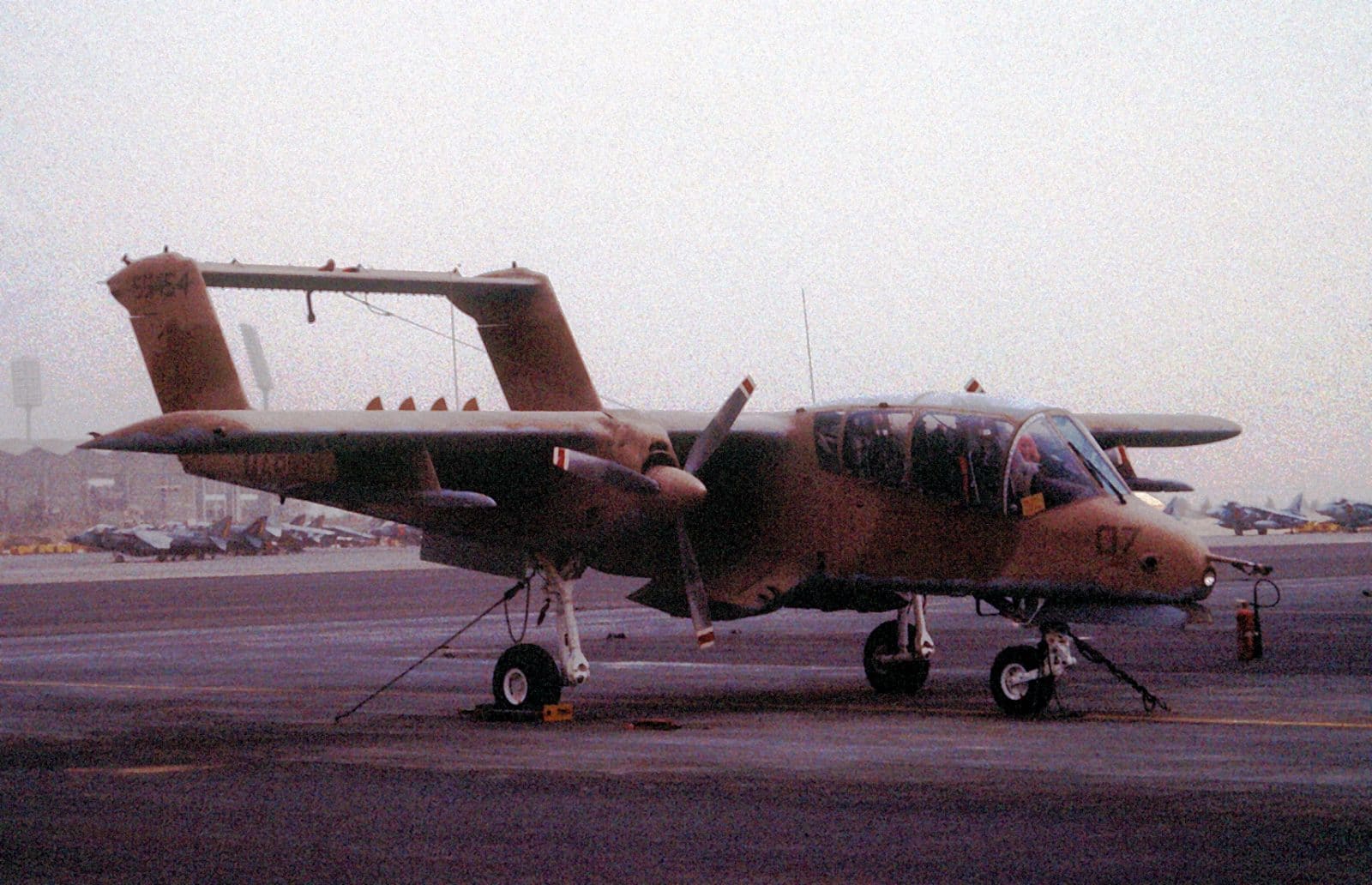
To War in the Desert
VMO-2 took six OV-10s to Saudi, a 10,000 mile jaunt, during Operation Desert Shield in August of 1990. When Shield turned to Storm, VMO-2 flew 286 sorties totaling more than 900 around-the-clock flight hours . They lost two of their OV-10As, one of which was the first aircraft lost in-theater.
The OV-10 Bronco spotted for Coalition artillery and for the 16 inch rifles onboard the Iowa-class battleship USS Wisconsin (BB-64). Credited with 54 tanks, 53 armored personnel carriers, 49 artillery pieces, 112 other vehicles, and four command and control buildings destroyed, VMO-2 made the most of the last combat missions flown by American OV-10s. The Marine Corps retired their Broncos in 1995.
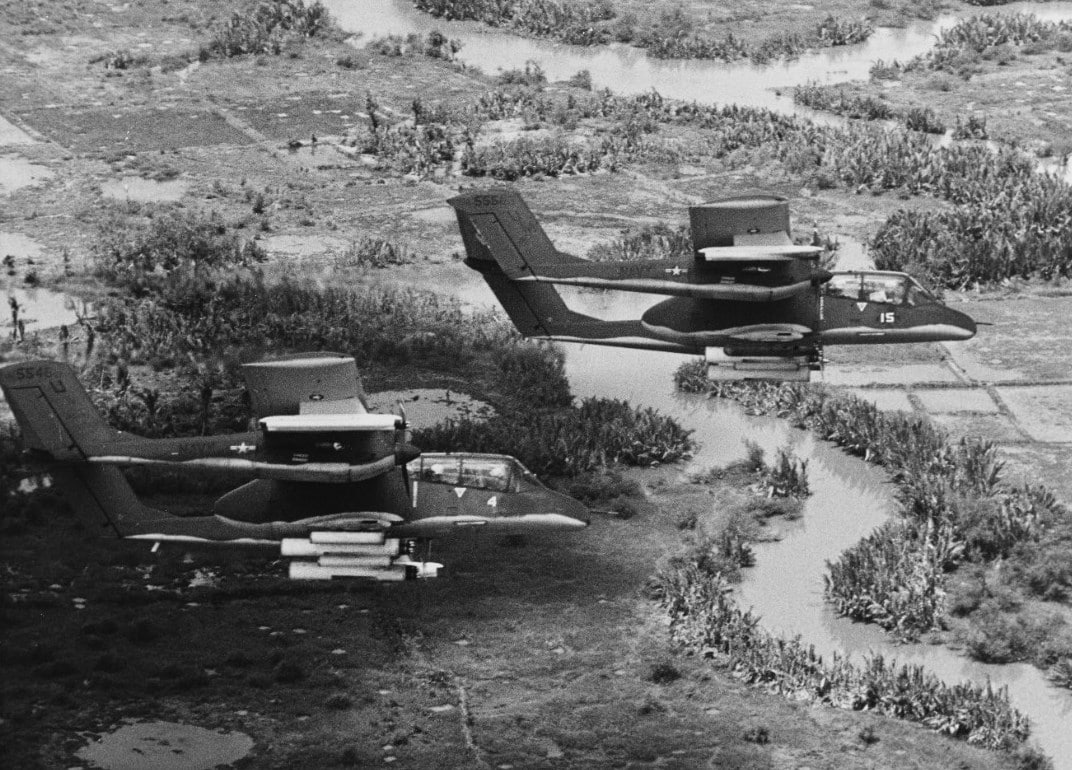
The Navy and Black Ponies
Navy Broncos in Vietnam were assigned to Light Attack Squadron FOUR (VAL-4) Black Ponies. VAL-4 stood up during October of 1968 using borrowed Marine Corps aircraft and by April 1969 they were flying combat sorties in support of Navy SEALS, Riverine forces, and anybody else who needed ordnance danger close all over South Vietnam and especially in the Mekong river delta.
The Black Ponies were probably the best-known of the Bronco users in Vietnam, often flying dangerous CAS missions for troops in contact. From April of 1969 to April of 1972, VAL-4 lost seven Broncos. Other than the few OV-10s assigned to Air Antisubmarine Squadron FOUR ONE (VS-41) at NAS North Island for type transition training and a test aircraft or two, VAL-4 was the only Navy squadron to operate the Bronco. Their aircraft were returned to the Marines when VAL-4 was disestablished in 1972.
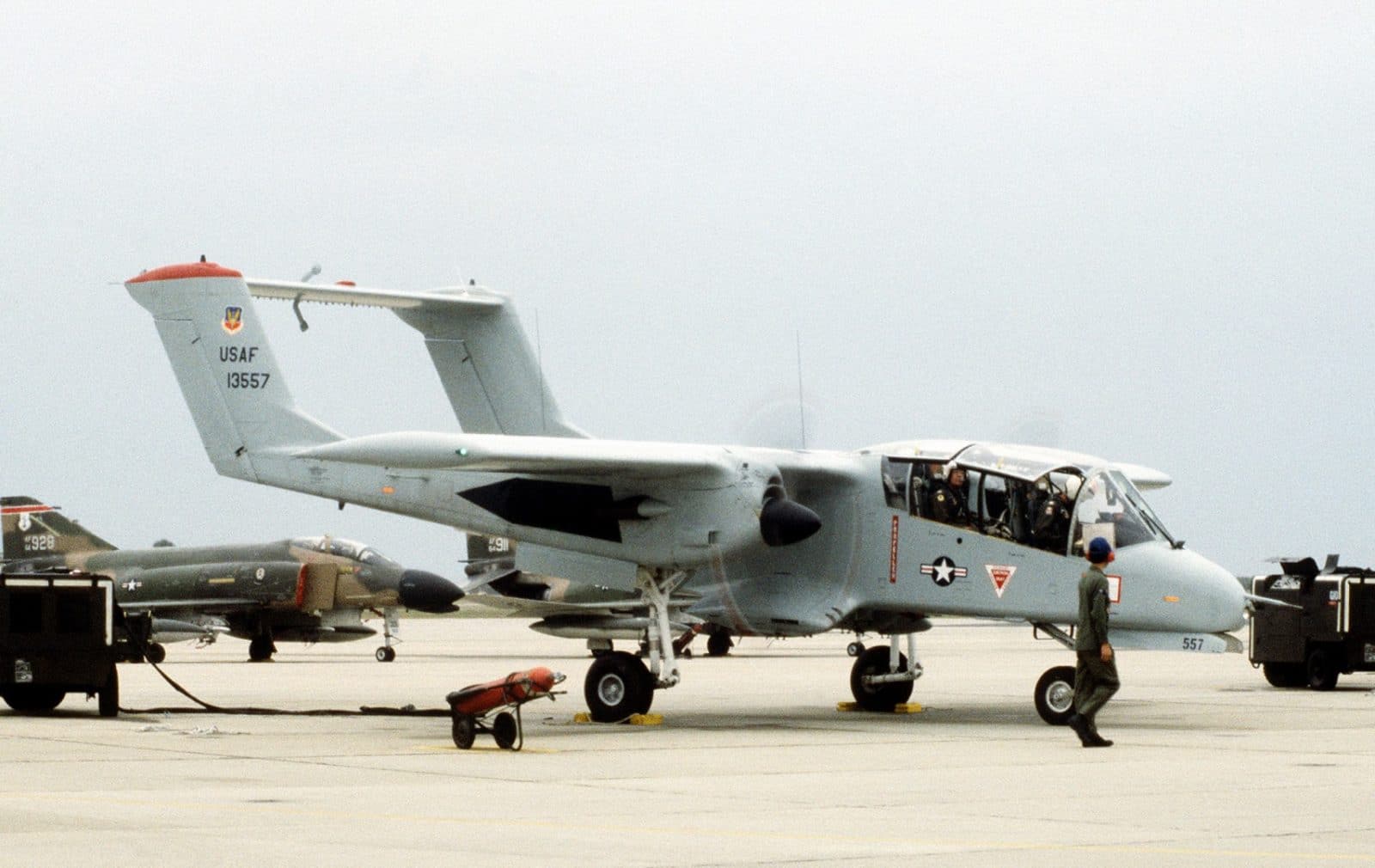
Trail Busting with the Air Force
Air Force Broncos arrived in Vietnam during July of 1968. Operation Combat Bronco was an operational test and evaluation of the OV-10 and came to a close at the end of October. After that the USAF began flying OV-10s out of Bien Hoa Air Base (19th Tactical Air Support Squadron [TASS]), Da Nang Air Base (20th TASS) and Nakhon Phanom in Thailand (23rd TASS).
Misty Bronco was an evaluation of the Bronco as a light strike platform. From 1971 the 23rd TASS Broncos were later upgraded with Pave Spot laser target designator pods, LORAN, and night vision equipment. These Trail-busting Broncos illuminated targets for Air Force fast movers. But the USAF Broncos paid a heavy price. The Air Force lost 64 of their 157 OV-10s. Replaced largely by Cessna OA-37 Dragonflies and later by Fairchild Republic A-10 Thunderbolt IIs, the USAF 19th TASS and 21st TASS retired their last Broncos during September of 1993.
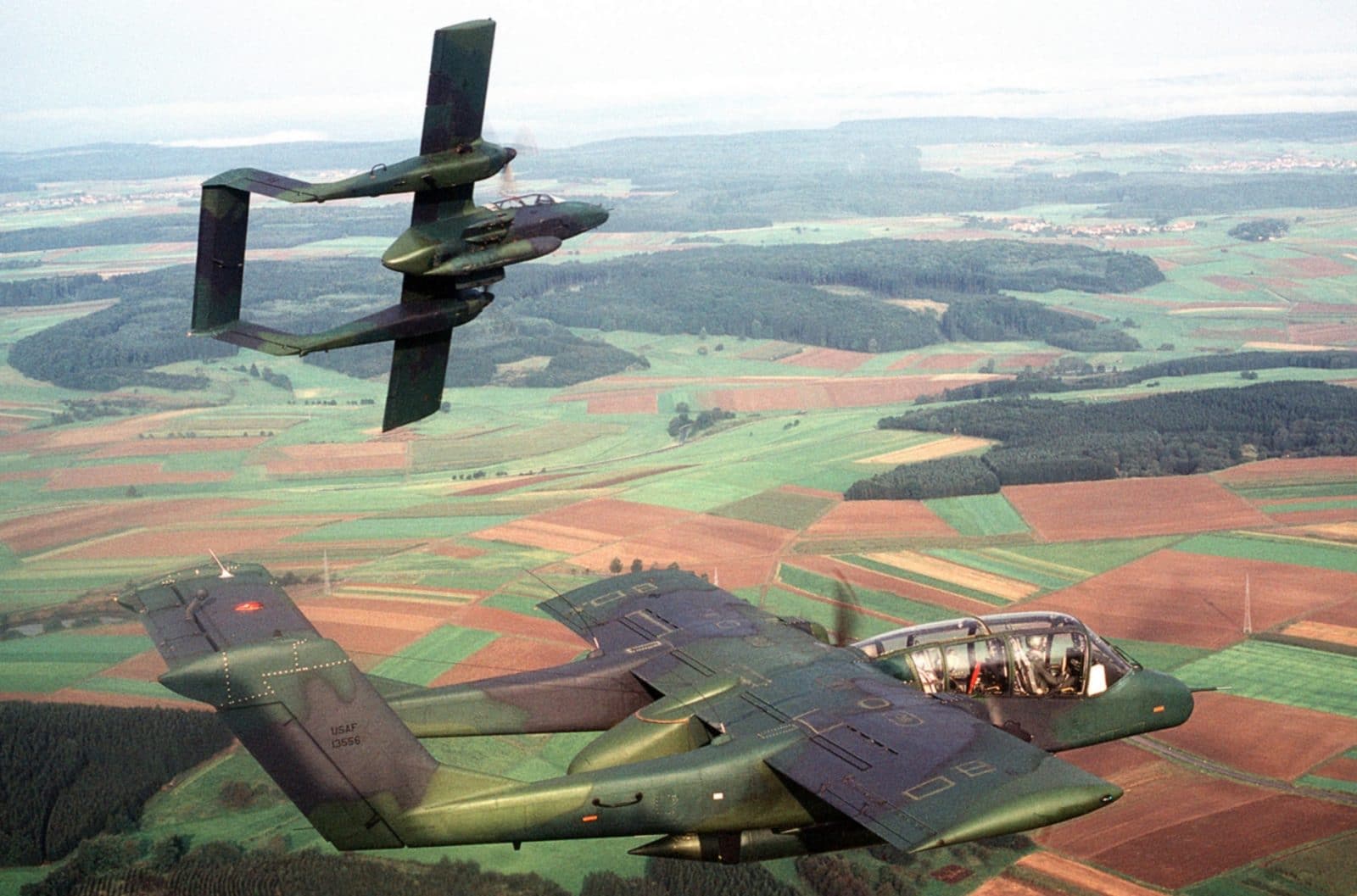
The NOGS
Development of the Bronco continued with the OV-10D Night Observation Gunship (NOGS) program. Added to the standard OV-10A airframe on these Broncos was a forward-looking infrared (FLIR) night vision system mounted in a turret located under the extended nose of the Bronco along with boom-mounted chaff/flare dispensers and uprated engines spinning four bladed propellers and wearing exhaust stacks fitted with IR suppression.
A three barrel 20 millimeter cannon mounted under the fuselage was slaved to the FLIR turret. The OV-10 Night Observation Surveillance (NOS) variant (without the gun system) went to Saudi with the Marines for Desert Shield and Storm. OV-10D+ Broncos were reworked with new electrical harnesses, instrumentation upgrades, and strengthened wings.
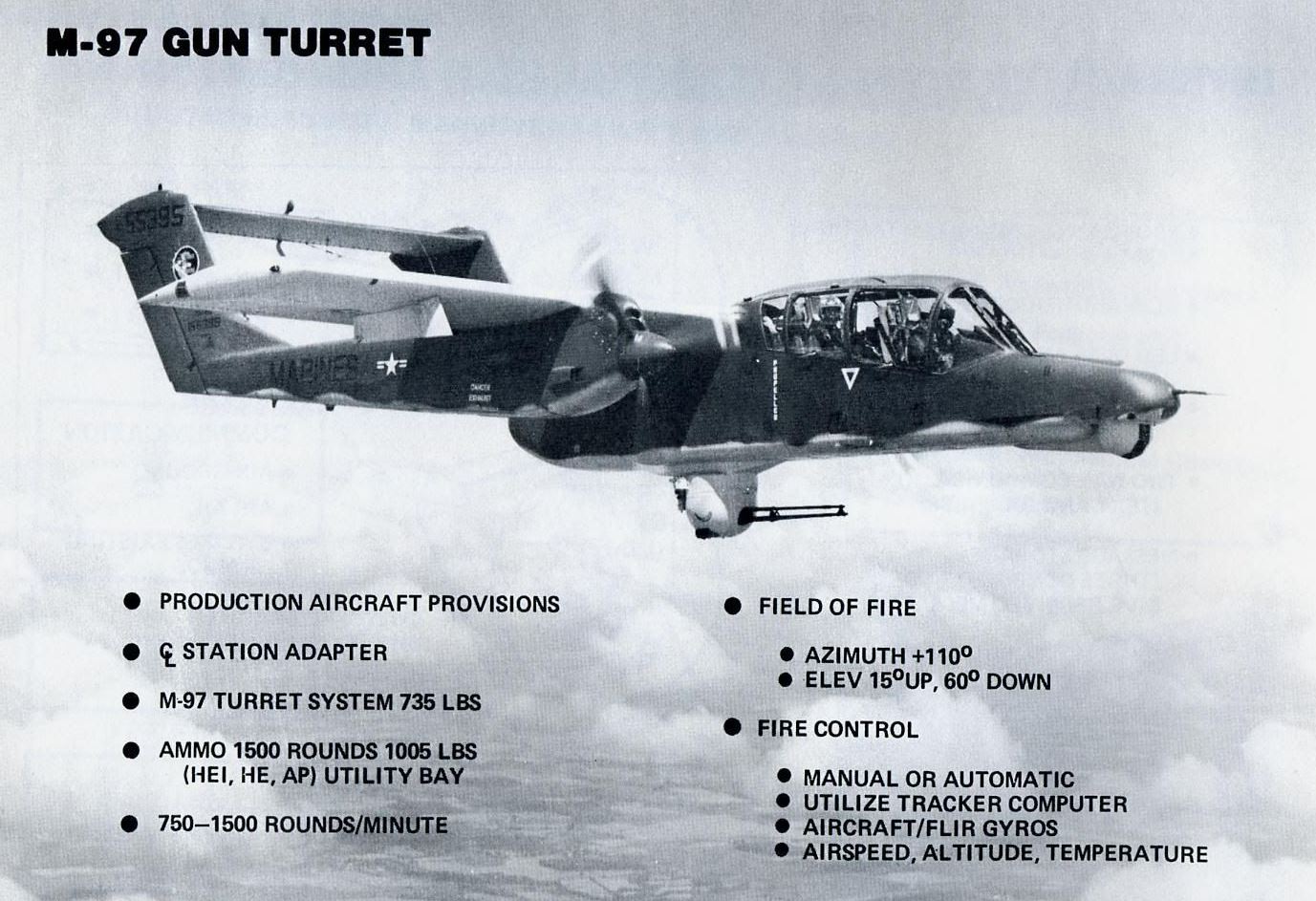
Research With NASA
Two NASA-owned OV-10 Broncos were reanimated, updated with current communications gear and some new black boxes, and sent to Iraq in May of 2015. Equipped with the Advanced Precision Kill Weapon System (APKWS), a 70 millimeter rocket with a laser seeker and control section bolted on, these former OV-10G+ Combat Dragon II aircraft were used as very effectively as man-killers against ISIS.
By all accounts the Broncos kicked serious tail over there in the sandbox, flying some 120 sorties over 82 days with 99% mission availability. Wouldn’t you know it…politics did what ISIS couldn’t. When you think of whatever aircraft ends up being the new Air Force OA-X Light Attack Aircraft. remember it could have been the Bronco.

Still Earning Their Keep at Different Kinds of War
Today Broncos still fly with the California Department of Forestry and Fire Protection (Cal-Fire) as aerial firefighting control aircraft. At least one foreign nation is still using Broncos in combat.
The Philippines have been fighting ISIS with OV-10 Broncos for many years and as you might expect, with great effectiveness. The enemies may be different now, but Broncos are still fighting. A handful of privately owned OV-10s are flying in civilian hands, pleasing crowds with performances at airshows and causing Bronco fans to sigh just a little bit.
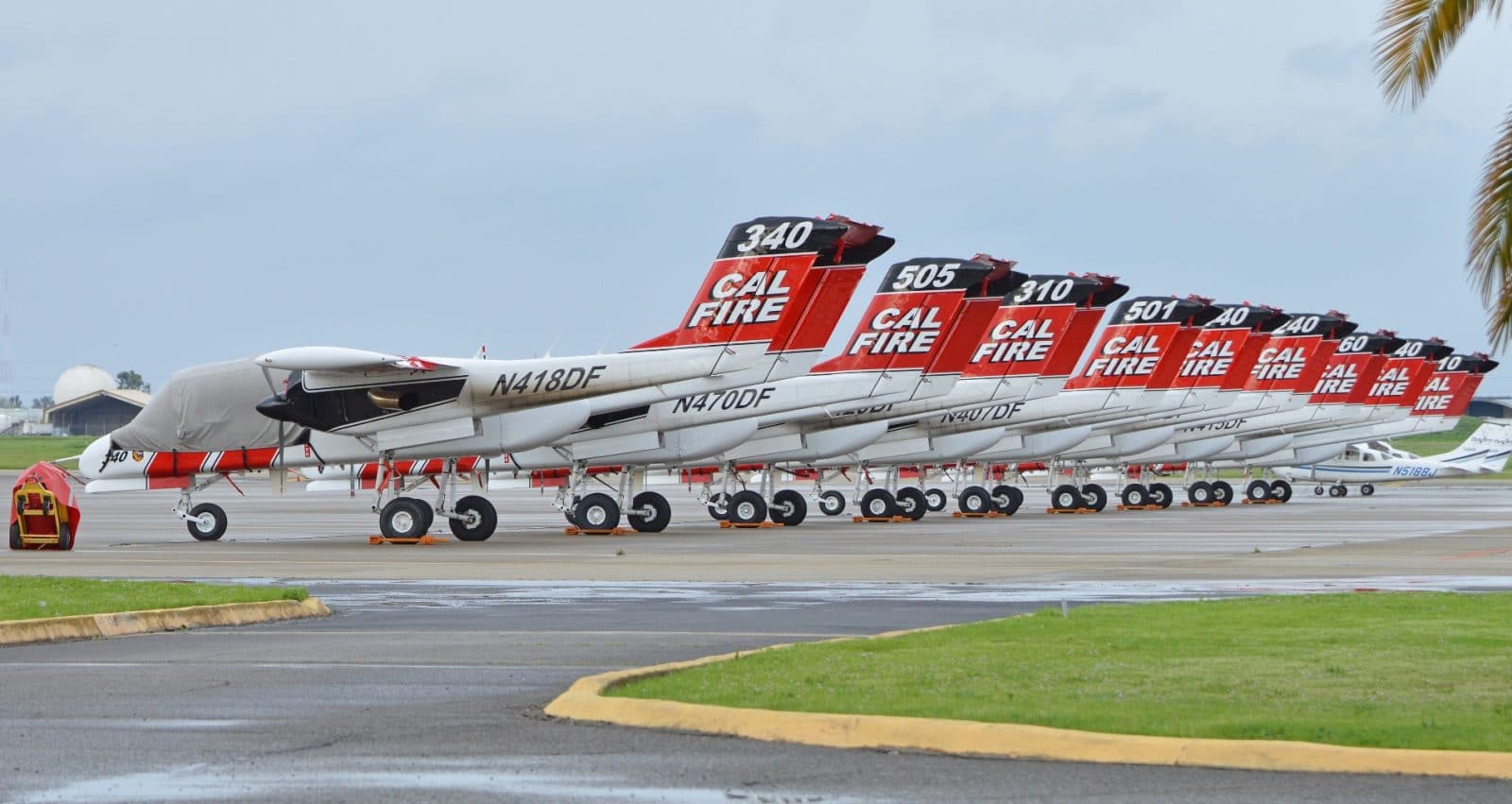

At one point in the early 2000s between five and eight Broncos were updated for State Department work in Hagerstown MD. They midnight blue in color, armor plating below the canopy area. These were originally A model updated to special D models. It has many years so I may have forgotten a few more details